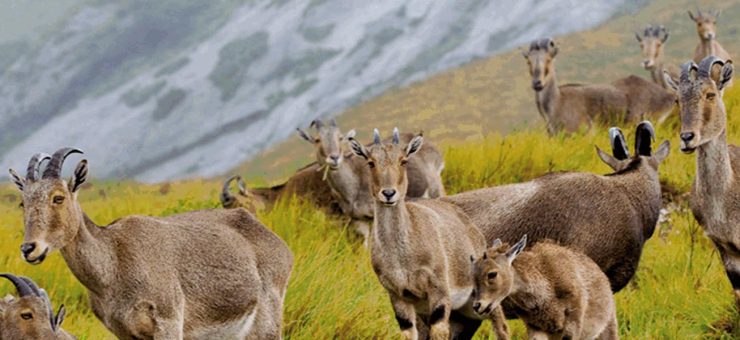The Indian forests team with wildlife of a varied species. Most forests are protected national parks, providing sanctuaries to several special or endangered species of animals and in some cases to migratory birds. Additionally, there are many Indian Wildlife Sanctuaries that serve as important habitats for a diverse range of animals and birds.
All across the country are wildlife sanctuaries whose area extend over several thousand of square kilometers, where wildlife can be observed in its natural surroundings. Each sanctuary supports several species of wildlife, but is usually well known for one particular species. In some cases, these are rare or even endangered species.
Project Tiger, initiated in 1973, identified major areas inhabited by tigers. These became area protected by the projects, enabling a significant increase of the tiger population. Bandhavgarh and Kanha national parks in Madhya Pradesh; Sariska and Rabnthambore in Rajasthan and derbans in West Bengal are some of the country’s best known tiger reserves. Other species at these places include panthers, and several species of deer and antelope the commonest of which are axis deer and blue bull.
Bharatpur, a five-hour drive from Delhi, has the largest bird sanctuary in Asia – the Keoladeo Ghana National Park (formerly known as the Bharatpur Bird Sanctuary), which is one of the best Indian Wildlife Sanctuaries. Waterbirds that migrate from other parts of the country include herons, ibis, pelican, painted storks, spoonbills, agrets and openbilled strokes. Various species of ducks and geese migrate from place in Russia. These include Brahminy ducks and the endangered Siberian crane. Stretched over 29 sq. km of swamps and marshes, Bharatpur has causeways which can be negotiated on foot, or bicycle, the best time for a visit from October to March when the weather is relatively pleasant and when the sanctuary teems with birdlife. July-August is the breeding seasons for the resident species.
October to March is the most pleasant time to visit any sanctuary in the country, with the exception of Dachigam in Kasmir which is best visited during summer. However, the chances of spotting wildlife are better from March to June when the weather is hot, end the sun dries the dense foliage which otherwise provides effective cover for the animals.
All wildlife sanctuaries are accessible by car, and all have accommodation within or near them. Many have specific visiting hours and provide forest rangers with each party of visitors. The advantages is that with their intimate knowledge of the forest and the habits of each animal, little time is wasted getting to a spot where animals are most likely to be seen.
Rules and regulations for wildlife sanctuaries are no more than those dictated by common sense: wear clothes that blend rather than stand out in the forest; perfumes and cigarettes should be avoided for animals have an extremely keen sense of smell, potentially dangerous animals should not be approached on foot.
